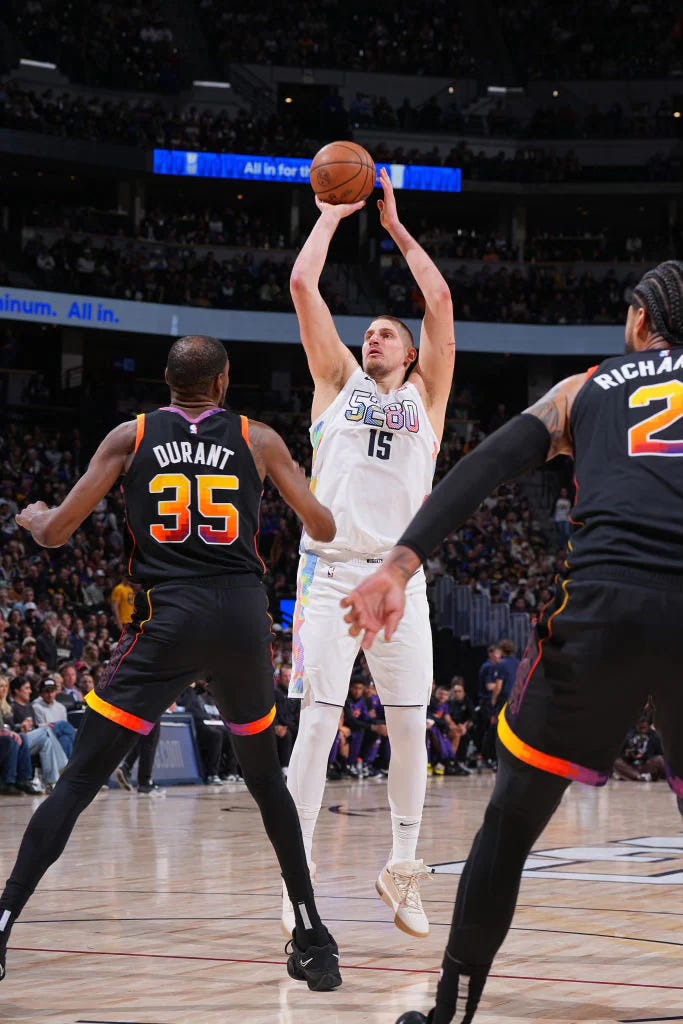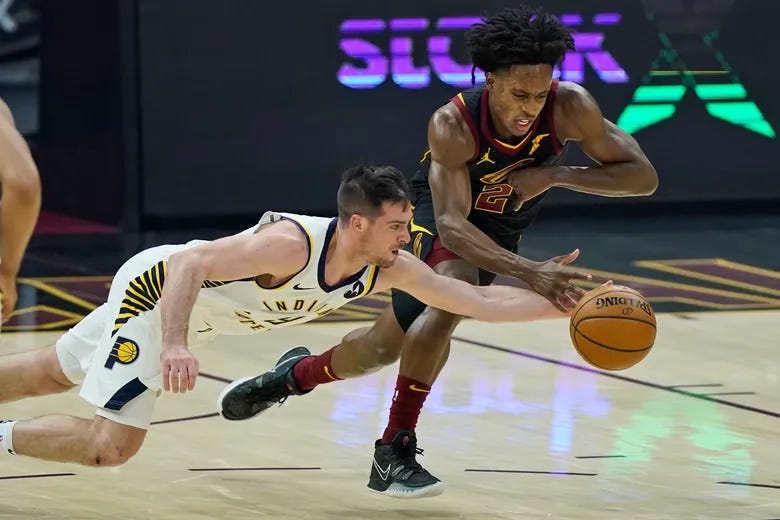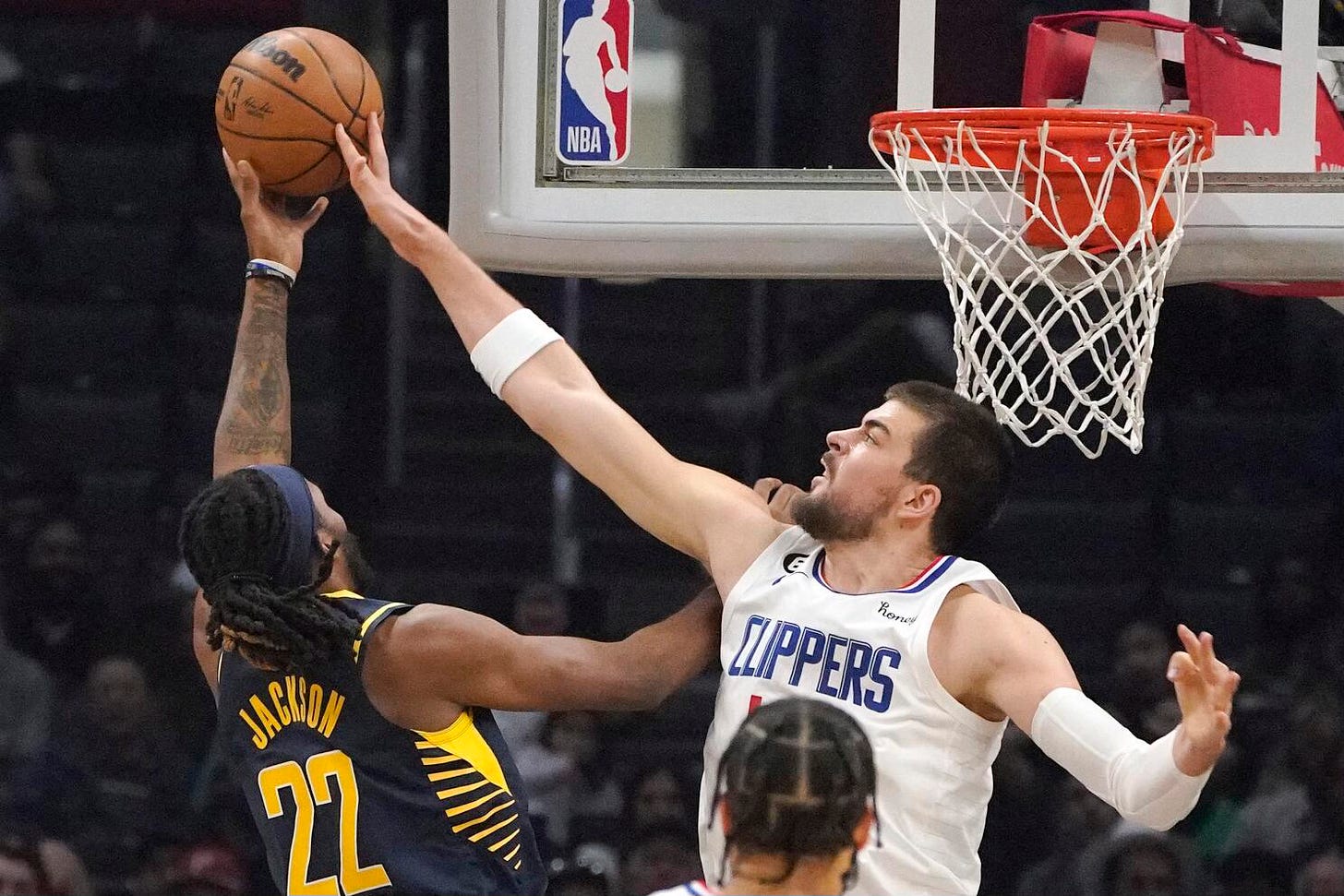A Plea for Roto
Head-to-head leagues are the leagues of the masses. What if I told you that the masses were leading you astray?
If you’re reading this, there is a good chance you know that there are two primary types of fantasy basketball leagues: Head-to-Head and Rotisserie (commonly referred to as Roto). Head-to-head leagues are the leagues of the masses. What if I told you that the masses were leading you astray?
Picture this: It’s March. You have just spent the past five months perfecting your fantasy basketball team. You drafted perfectly in October, made several key waiver-wire additions in November, and took your rock-solid squad to juggernaut status with a well-timed trade just before the all-star break. Nothing could stop you in this league — at least until one poorly-timed ankle sprain in the second week of March takes out Nikola Jokic in week two of the fantasy playoffs.
Right after you finished with the best record in the regular season, your fantasy team’s playoff run is over as quickly as it started. Your league mates laugh at you as you plead with them that you would have won it all if it wasn’t for one dumb injury. You ponder the purpose of life and question why you torture yourself with this game that you love year after year after year. Enter Roto.
What is a Roto league?
Roto scoring is actually pretty simple; it’s a season-long endeavor utilizing the same nine categories that are the building blocks of fantasy basketball — points, rebounds, assists, three-pointers, blocks, steals, field-goal percentage, free-throw percentage, and turnovers.
Instead of adding up 9-category totals against one team each week, Roto leagues add up 9-category totals at the end of the season against every team in the league. There are zero weekly matchups. If your Roto league has 12 teams, the team with the most blocks at the end of the season gets a score of 12 while the team with the least blocks at the end of the season gets a score of one. This scoring system carries across all nine categories. The team that scores the most Roto points across all nine categories at the end of the season wins it all.
Traditional Roto leagues are also played with a games cap, which means each starting slot on your roster has a maximum number of games played that can be utilized across the entire NBA season. For a 10-starter league with a per-position games cap of 82, every manager has 820 played games to capitalize on throughout the season. The use of a games cap further evens the playing field across the league by preventing any one manager from spamming their way to a games-played victory come season’s end.
In a 10-starter league with a five-man bench, your 15-player roster can theoretically fill 1,230 starts. That’s a 410-game buffer compared to the 820-game cap detailed above. This allows Roto managers to weather the storm of unavoidable injuries while also picking and choosing their spots to start a player with a guaranteed gem of a fantasy stat line.
Why Roto?
Roto is the solution to some of the most damning aspects of head-to-head fantasy basketball leagues.
Stressed about a poorly-timed two-start week in the fantasy playoffs? In Roto, it’s no big deal. You can freely draft players from the Timberwolves, the Suns, and the Pelicans this upcoming season, who all have 82 total games on the schedule despite playing two-game weeks during the head-to-head fantasy playoffs.
Your best player gets injured in March? There’s no fantasy playoff matchup to worry about as a Roto manager. A small injury in March is the same to you as a small injury in December.
Did you just watch Jokic as he dropped the first 30-20-20 game in NBA history? Were you tuned in as Ivica Zubac blocked six shots vs. the Lakers in February of 2022? Did you witness T.J. McConnell record 10 steals vs. the Cavaliers in 2021? Roto managers get to ride the high of huge individual player performances all season long since stats don’t get erased and reset week in and week out. There is no better feeling than winning a Roto category like blocks or steals by the slimmest of margins. Those nail-biting category wins earn players like Ivica Zubac or T.J. McConnell a banner in your personal fantasy rafters forever.
Your favorite flier isn’t panning out early in the season? No worries — your golden ticket’s second-half breakout doesn’t hurt you while he’s on your bench before the breakout comes. Due to the traditional Roto games cap, you can’t play all of your players every night, anyway. Not every breakout pulls a 2023 Jalen Johnson and shows up on night one of the season. In Roto, you can hold onto your favorite fliers for a month without needing to part ways because of a weekly games played disadvantage.
Worried about commonplace silly-season woes during the final month of the season? In Roto, it’s actually an opportunity to capitalize on some silly season wins. You’ve already banked the stats from Lauri Markkanen’s 2022-2023 breakout in Utah — as soon as the Jazz enter their tankathon sweepstakes late in the season, you can pounce on the back-ups that put up powerful fantasy lines despite leading their team’s tank.
Roto leagues still have trash talk. There are still hit waiver wire additions. There are still draft-day winners and losers. There is still thoughtful streaming. There are still huge basketball performances to awe over alongside the headache-inducing duds that make you lose sleep at night.
The main difference between Roto and Head-to-Head leagues is a leveling of the playing field, which helps bring some added sense of statistical and analytical fantasy prowess to the forefront of your competition. Roto games-cap leagues naturally even out the unpredictability that plagues every manager in head-to-head formats. In Roto, the best fantasy mind wins above all else.
I know I’ve come on strong here. I still play in plenty of head-to-head leagues myself. But every year, I plead for more of my league mates to give Roto a try. And now I’ve made my plea to you as well.
An introduction on two fronts:
Now that I’ve given you an introduction to Roto, let me peel back the fourth-wall I’ve already broken and give myself a bit of an introduction as well. My name is Josh, and I am a fantasy basketball nerd just like you. This is my first bit of work with the Point Made team, but it won’t be the last. The Point Made team already has dynasty basketball and prospect evaluation locked down, so I’m going to bring you some content with season-long, re-draft fantasy analysis in mind. I will likely sprinkle in some non-fantasy, real-life NBA content as well. Even if you don’t join a Roto league, I’ll still be here chatting about anything related to NBA hoops.
But seriously, join a Roto league.





